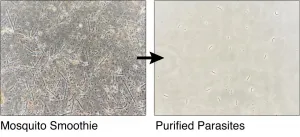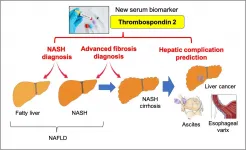Theory of Tradition: Why architect Seiichi Shirai practiced calligraphy
2021-06-17
(Press-News.org) Seiichi Shirai (1905-1983) was an influential architect whose work has affected the designs of significant architects of the 20th century. Associate Professor Kosuke Hato of the Department of Architecture, Faculty of Engineering, Shinshu University has studied the work of Shirai and examined why the architect worked extensively on calligraphy. Hato's strategy is to clarify the relationship between the architect and his activity of calligraphy through Shirai's Theory of Tradition.
The 1950s in Japan is known as a time when architects actively discussed traditions, and Shirai is a representative example. Hato, in his past article, clarified not only the 1950s but every aspect of the Theory of Tradition in the written works of Shirai. This time Hato clarifies the meaning of practicing calligraphy. Hato states that Shirai's practice of calligraphy can be summarized as the four characteristics: interest in links with the primitive aspects of kanji; emphasis on "Yo (utility)"; "Gyo (ascetic practice)" which is nature as sustained conflicts between philosophy and the physical self; and a rapid writing style that aimed for something beyond one's consciousness without the constraint of accuracy of form.
Verifying the above content against the characteristics of Shirai's Theory of Tradition, Hato writes, "both were established by a similar consciousness of purpose, and that they both share an emphasis on "Yo," but apart from this, the idea of grasping universal potential of object without being misled by its external form and regional origin in the Theory of Tradition was put into practice as the "Gyo" of seeking to create something beyond form and consciousness in the practice of calligraphy."
Shirai's calligraphy influenced his architecture, as did Le Corbusier's painting on his designs and urban planning. Associate Professor Hato will continue to elucidate the relationship Shirai's Theory of Tradition had to his practice of calligraphy and architectural works.
INFORMATION:
ELSE PRESS RELEASES FROM THIS DATE:
2021-06-17
Is it possible to drive nanoparticles to orbit below the light diffraction limit using a Gaussian beam? A recent joint research project reported in Nature Communications says yes.
It is well known that light possesses not only energy but also momentum. When light irradiates an object, momentum is transferred to the object, thus generating light pressure on the object. At the microscopic scale, microparticles and nanoparticles (such as biocells and macromolecules) can be manipulated by the light force. Atoms can be cooled by light pressure to achieve atomic clocks, Bose-Einstein condensation, and so on.
In addition to the linear momentum of light being transferable, the angular momentum of light can also be transferred to an object, thus causing object rotation. Since ...
2021-06-17
Tissue-engineering scaffolds built around ultrashort peptides provide a new platform for studying bone regeneration in the lab.
The peptides developed at KAUST self-assemble into a cartilage-like hydrogel that mimics the natural matrix that underpins bone formation in the body. Its physiologically relevant properties enable this cell-friendly biomaterial to support the growth and development of bone marrow precursor cells. It also enables tubular blood vessels to take shape, which is a critical part of bone health and repair.
"Our system is a simple, efficient and robust model that closely resembles the complex architecture of native bone tissue," says Ph.D. student Salwa Alshehri. "Using these peptide-based ...
2021-06-17
Thousands of years ago, archaic humans such as Neanderthals and Denisovans went extinct. But before that, they interbred with the ancestors of present-day humans, who still to this day carry genetic mutations from the extinct species.
Over 40 percent of the Neanderthal genome is thought to have survived in different present-day humans of non-African descent, but spread out so that any individual genome is only composed of up to two percent Neanderthal material. Some human populations also carry genetic material from Denisovans - a mysterious group of archaic humans that may have lived in Eastern Eurasia and Oceania ...
2021-06-17
A study carried out by the Institute of Environmental Science and Technology of the Universitat Autònoma de Barcelona (ICTA-UAB) and the Instituto de Saúde Pública of the University of Porto (ISPUP), concludes that exposure to natural spaces during the first COVID-19 lockdown in 2020 was beneficial for the mental health of Spanish and Portuguese citizens.
The research shows that, in Portugal, during the first confinement, people who maintained or increased contact with natural public spaces, such as parks and coastal areas, or who could contemplate these spaces from their homes, presented lower levels of stress, psychological distress and psychosomatic symptoms.
In Spain, those who maintained or increased contact with private natural ...
2021-06-17
"Boomers" and "millennials" who go to church are more likely to trust their neighbours and donate to charity, according to a new study.
Religious beliefs and participation help close the gaps in civic participation between millennials and their elders, researchers have found.
Experts have measured the social "capital" religion gives people of all ages. They found those in their 20s and 30s were less likely to join groups and associations, and less likely to be religious, but being involved with the church gave them more "religious capital" than older people who also attended services.
The study shows boomers often have more social capital than millennials and are more likely to be religious. Religious ...
2021-06-17
A faster method for collecting pure malaria parasites from infected mosquitos could accelerate the development of new, more potent malaria vaccines.
The new method, developed by a team of researchers led by Imperial College London, enables more parasites to be isolated rapidly with fewer contaminants, which could simultaneously increase both the scalability and efficacy of malaria vaccines.
The parasite that causes malaria is becoming increasingly resistant to antimalarial drugs, with the mosquitoes that transmit the disease also increasingly resistant to pesticides. This has created an urgent need for new ways to fight malaria, which is the world's third-most deadly disease in under-fives, with a child dying from malaria every two minutes.
Existing ...
2021-06-17
Ibaraki, Japan - Severe childhood restrictive cardiomyopathy is a condition that causes the muscles in the walls of the heart to become stiff, so that the heart is unable to fill properly with blood. A mutation in a protein called BAG3 is known to result in restrictive cardiomyopathy, muscle weakness, difficulty taking in enough oxygen, and damage to multiple peripheral nerves, often shortening the patient's lifespan significantly. Until now there has been no successful model for the disease, making it extremely difficult to study.
However, researchers in Japan and Germany have now created a mouse model that mimics the human pathology, allowing the disease to be studied more easily. The team's data suggest ...
2021-06-17
Osaka, Japan - Nonalcoholic fatty liver disease (NAFLD) is the most common liver disease worldwide and can progress to liver cirrhosis, liver failure or cancer. Currently, nonalcoholic steatohepatitis (NASH) diagnosis requires an invasive liver biopsy which can lead to procedural complications. Now, researchers at Osaka University working with international collaborators have identified a noninvasive biomarker that can identify patients at risk of NAFLD complications using a simple blood test.
Owing to the increasing prevalence of obesity worldwide, ...
2021-06-17
The electroreduction of carbon dioxide (CO2) to produce value-added multicarbon compounds is an effective way to cut down CO2 emission. However, the low solubility of CO2 largely limits the application of related technology.
Although gas diffusion electrode (GDE) can accelerate the reaction rate, the instability of the catalysts caused by electrolyte flooding hinders further reaction.
Recently, inspired by setaria's hydrophobic leaves, Prof. GAO Minrui's team from University of Science and Technology of China developed Cu catalyst composed of sharp needles which possesses high level ...
2021-06-17
When animals are hot, they eat less. This potentially fatal phenomenon has been largely overlooked in wild animals, explain researchers from The Australian National University (ANU).
According to lead author Dr Kara Youngentob, it means climate change could be contributing to more deaths among Australia's iconic marsupials, like the greater glider, than previously thought.
"Hot weather puts all animals off their food. Humans can deal with it fairly well; we usually have plenty of fat reserves and lots of different ...
LAST 30 PRESS RELEASES:
[Press-News.org] Theory of Tradition: Why architect Seiichi Shirai practiced calligraphy



